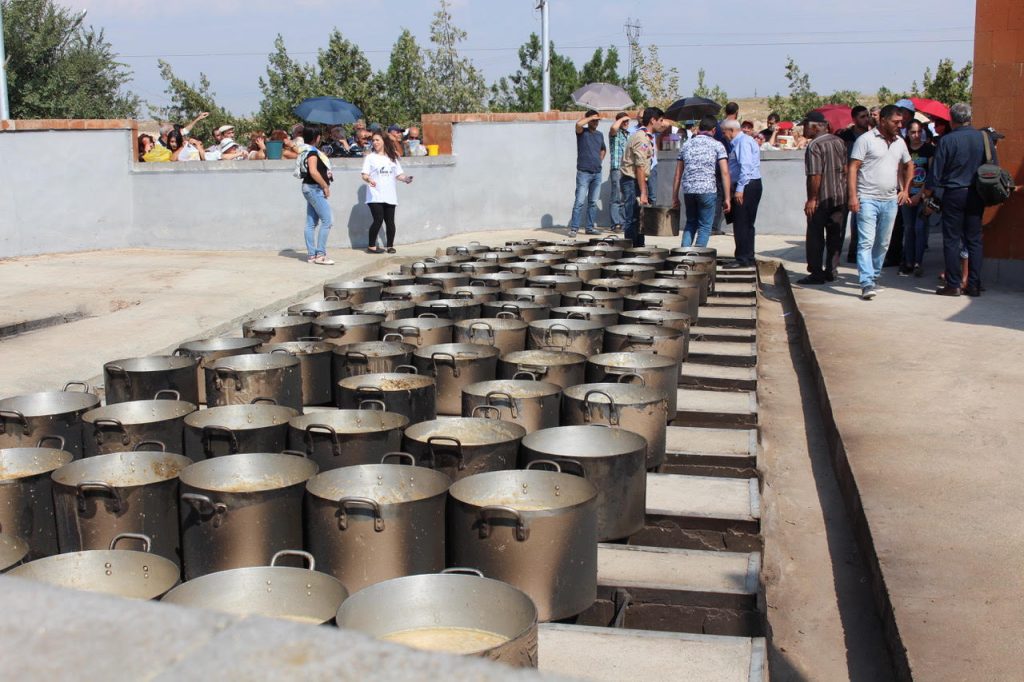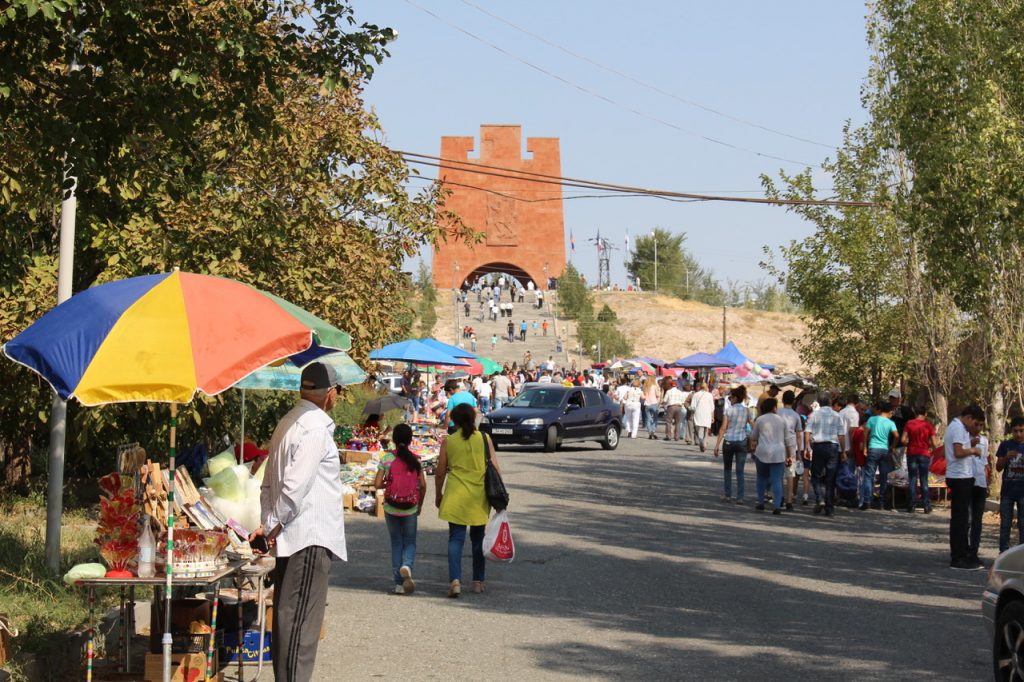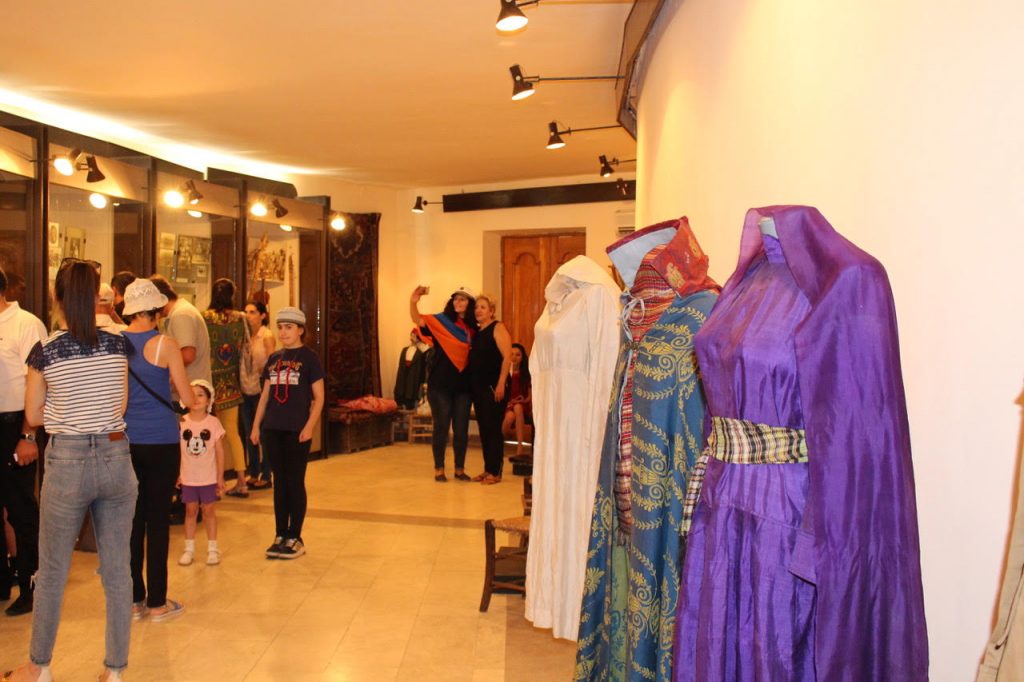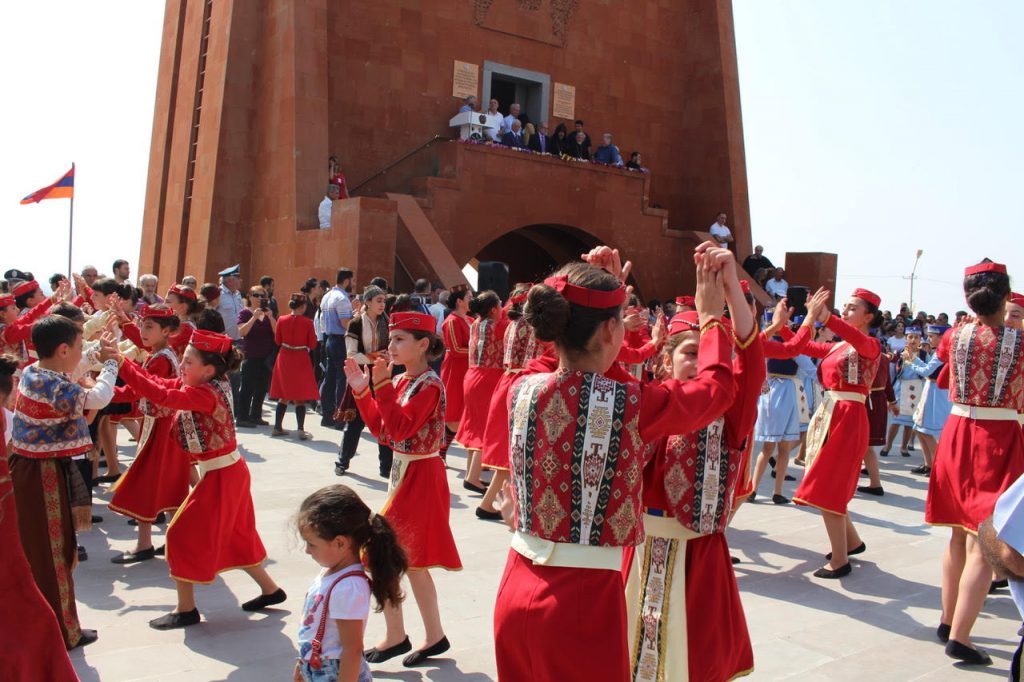On the road near Yerevan’s Zvartnots airport, visitors may have noticed a sign for Musaler village and the red masonry memorial nearby. The memorial recalls the battle of Musa Dagh (Musa Ler in Armenian), a mountainous, Armenian-populated region north of Syria on the Mediterranean coast. “Musa” is “Moses” in Turkish or Arabic, and “dagh” is Turkish for “mountain”. Thus Musa Dagh translates to Moses’ Mountain.*
On July 13, 1915, during the course of the Armenian Genocide, Ottoman officials ordered the 5,000 – 6,000 inhabitants of six remote Armenian villages on Musa Dagh to prepare for deportation. The Turkish intent was to drive the Armenians into the Syrian Desert and to their ultimate annihilation. The punishment for noncompliance was death.
Sixty families felt noncompliance was futile and took their chance with “deportation”, never to be heard from again. The remainder decided to resist, and if necessary, die fighting. They climbed to defensible positions in their mountain, with which they were intimately familiar, bringing with them what provisions they could and whatever weapons they had. They confronted 3,000 trained Turkish soldiers and numerous Turkish irregulars. They fought with incredible bravery and ingenuity and with minimal losses.
Against incredible odds and with diminishing provisions they held off the Turkish army for 53 days, ultimately being rescued by one English and five French war ships in the Mediterranean Sea, which saw their banners asking for help. One of the French ships was the Jeanne d’Arc. In the 1960s, the Jeanne d’Arc helicopter carrier, the successor to the original Jeanne d’Arc, visited Boston. The Armenian community presented a bronze plaque to the ship thanking the French navy for their rescue. A member of the delegation visiting the Jeanne d’Arc was from Musa Dagh and was one of the Armenians who was rescued.

An undated photograph from when the Armenian community of Boston presented a bronze plaque to the successor ship, thanking the French navy for their rescue (Photo: Archive Photo – Hairenik, c. 1964)

Cooking pots of harissa for matagh, Musa Dagh commemoration, Musaler village (Photo: Hovsep Daghdigian)
After being taken to Port Said in Egypt, many settled in the village of Ainjar (also spelled Anjar) in the Bekka Valley of Lebanon, near the Syrian border. Others came to Armenia and settled in the village of Musaler. In the villages of both Ainjar and Musaler, the villagers commemorate the Battle of Musa Dagh in September, cooking pots of harissa, not only recounting acts of past heroism, but reiterating their determination to survive whatever difficulties may confront them. I’m told that Musaler and Ainjar commemorate this event during different weeks in September so that villagers from one village may attend the ceremonies in the other village.
At the Musaler commemoration on Sept. 24, one of the guests was the mayor of Ainjar, Lebanon. Other activities included comments by Armenian military officials, songs, and dancing. Flying above the monument in addition to the Armenian flag was the flag of France. In the village is an ethnographic museum depicting life in Musa Dagh’s villages. Within the Musa Dagh memorial itself is a museum as well describing the defense of Musa Dagh and the rescue of its inhabitants.
Franz Werfel, an Austrian-Jewish author, depicted the defense of Musa Dagh in his German language novel The Forty Days of Musa Dagh in 1933, though the defense actually lasted fifty-three days. The novel was translated into many languages and was used as a blueprint for resistance within the Jewish ghettos in Germany during the Holocaust. A statue of Franz Werfel stands beside the Musa Dagh memorial in Musaler village.
***
* Editor’s note: Some experts have concluded that “Musa Dagh” is not actually named for Moses. Although the name Moses (Movses in Armenian), is popular among the Armenians of Musa Dagh, “musa” also means muse in Armenian (մուսայ), Greek (μούσα), and other languages.
The post Unseen Armenia: Musaler appeared first on The Armenian Weekly.
Source: Armenian Weekly
Link: Unseen Armenia: Musaler






